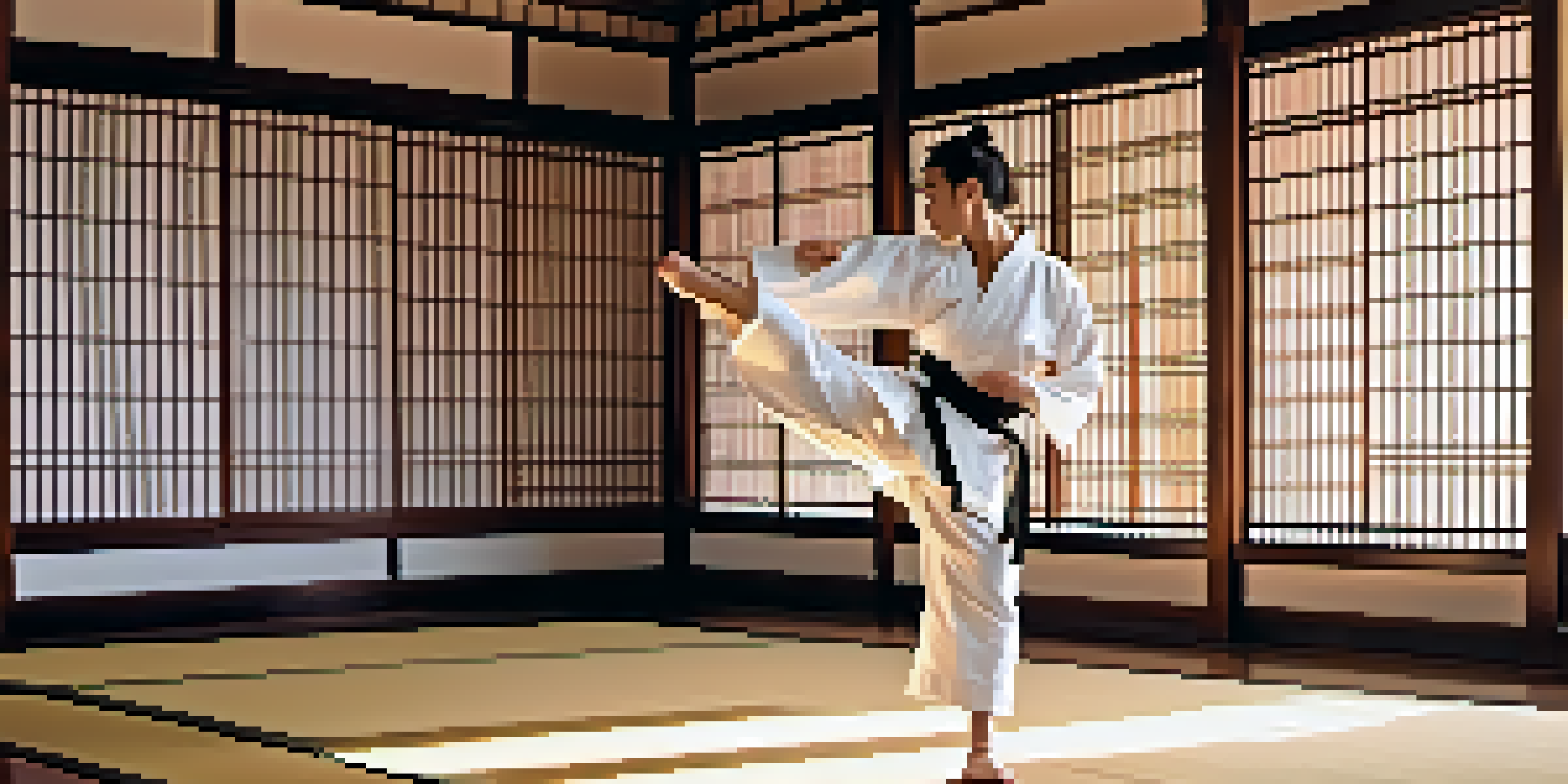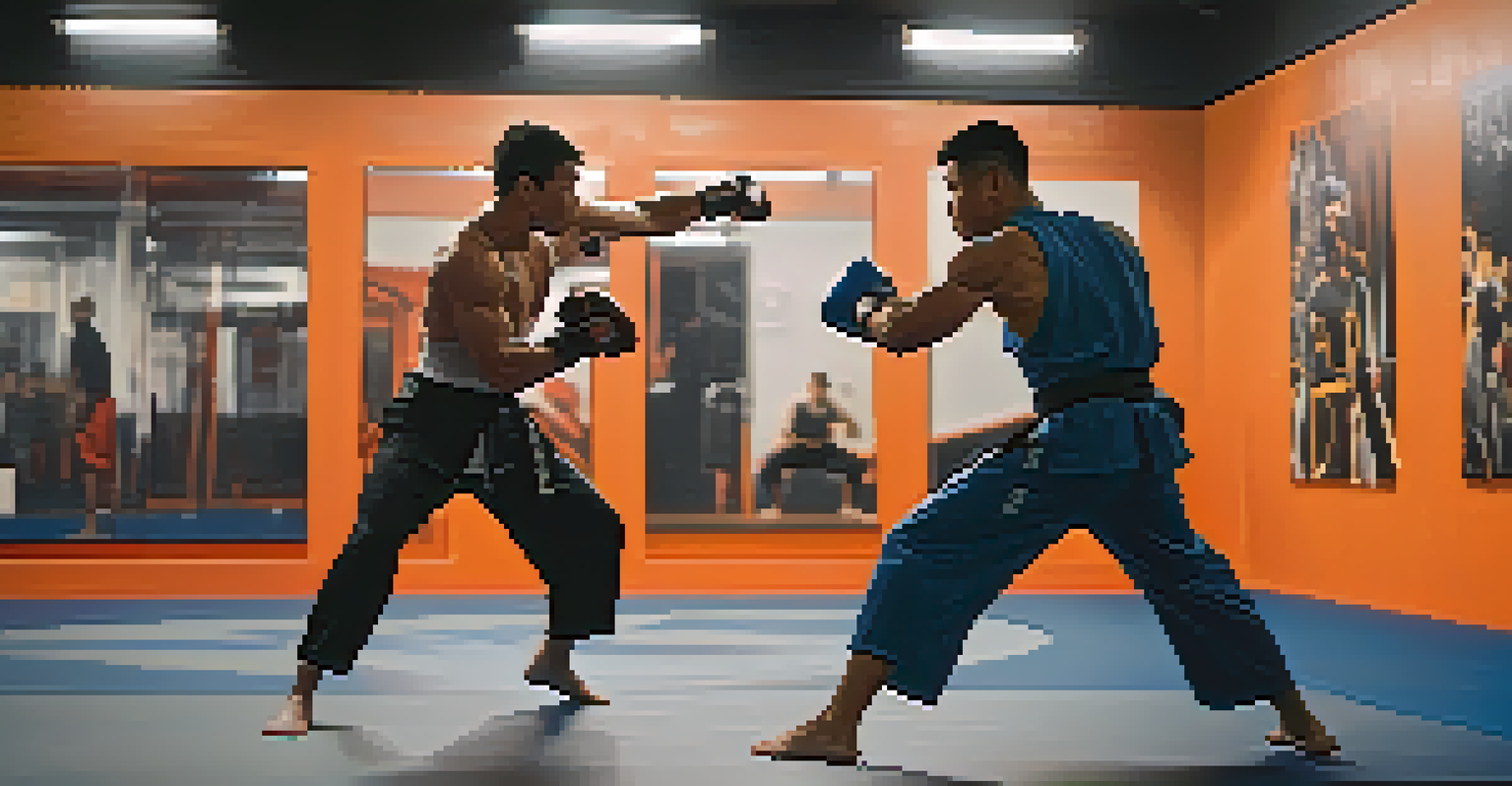Periodization in Martial Arts: Structuring Training Cycles

Understanding Periodization: A Martial Arts Essential
Periodization is a training concept that organizes workout cycles to optimize performance. In martial arts, this means structuring training to peak at specific times, like competitions or exams. By understanding this approach, practitioners can enhance their skills while minimizing the risk of injury and burnout.
Success is the sum of small efforts, repeated day in and day out.
Imagine preparing for a big tournament like a chef preparing a meal for a special occasion. Just as a chef plans their cooking schedule, martial artists must map out their training phases to ensure they are ready when it counts. This methodical planning helps in achieving goals efficiently.
Overall, periodization provides a framework that can lead to consistent progress. Whether you are a seasoned fighter or a beginner, grasping the basics of this concept can elevate your training experience and results.
The Phases of Periodization: Breaking It Down
Periodization typically consists of three main phases: preparation, competition, and transition. The preparation phase focuses on building a solid foundation of strength, endurance, and technique. This is where you’ll often see martial artists working on skill drills and conditioning.

Next comes the competition phase, where the intensity ramps up as you fine-tune your skills and strategies for performance. Think of this as the final touches on a painting, where every brushstroke counts. The goal here is to reach peak performance just in time for that big event.
Periodization Enhances Performance
Organizing training into cycles helps martial artists peak for competitions while reducing the risk of injury and burnout.
Finally, the transition phase allows for recovery and adaptation. This is crucial because it enables the body to heal and prepare for the next cycle. Like a well-tended garden, taking time to rest helps ensure that your skills flourish in the long run.
How to Create Your Training Cycle: A Step-by-Step Guide
Creating a training cycle involves assessing your goals and timelines. Start by identifying key events, such as competitions or belt tests, that you want to prepare for. This will help in determining the length of each phase and the intensity of your training.
The only way to achieve the impossible is to believe it is possible.
Next, break down each phase into specific goals. For example, during the preparation phase, you might focus on increasing your strength and flexibility, while the competition phase could involve sparring and strategy sessions. Setting measurable objectives keeps you motivated and on track.
Lastly, ensure your cycle is adaptable. Life can throw curveballs, and sometimes you may need to adjust your training. Think of it as navigating a winding road; flexibility will make your journey smoother and more enjoyable.
Importance of Recovery in Periodization
Recovery is often overlooked but is a crucial component of periodization. It allows your body to repair and grow stronger after intense training sessions. Without adequate recovery, you risk injury and decreased performance, much like a car that needs fuel to keep running.
Incorporating rest days, light training, and proper nutrition plays a vital role in this process. For instance, after a heavy training week, a lighter week focused on technique can help recharge your body and mind. It’s all about finding that sweet spot between pushing your limits and allowing your body to recover.
Recovery is Crucial for Success
Adequate recovery allows the body to heal and strengthen, making it essential for long-term progress in martial arts.
Remember, recovery isn’t just about downtime; it's an active process that enhances your overall training. By prioritizing recovery, you set yourself up for long-term success in martial arts and beyond.
Adapting Periodization to Different Martial Arts Styles
Different martial arts styles may require unique approaches to periodization. For example, a striking art like Muay Thai may emphasize conditioning and sparring, while a grappling art like Brazilian Jiu-Jitsu may focus more on technique and rolling sessions. Understanding these nuances ensures your training aligns with your specific goals.
Additionally, the level of competition can dictate how you structure your cycles. A professional fighter might need a more rigorous and detailed plan compared to a hobbyist. Tailoring your approach helps maximize your training effectiveness, regardless of your experience level.
Ultimately, being flexible and open to adjusting your periodization plan according to your chosen martial art will lead to better results. This adaptability is key in finding what works best for you, allowing you to thrive in your practice.
Tracking Progress: The Key to Effective Periodization
Tracking your progress is essential in periodization, as it helps you evaluate the effectiveness of your training cycles. Keep a log of your workouts, skills practiced, and any competitions you participate in. This data can provide insights into what’s working and what might need adjustment.
Consider utilizing tools like training journals or apps to record your progress. Just like a student keeps track of grades, recording your achievements can motivate you to reach new heights. Reflecting on your growth can also enhance your understanding of your own training patterns.
Adapt Training to Your Style
Tailoring periodization strategies to fit different martial arts styles and individual goals maximizes training effectiveness.
Incorporating regular assessments can further refine your approach. Whether it’s testing your sparring skills or measuring your physical abilities, these evaluations can help you celebrate milestones and identify areas for improvement, ensuring that your training remains effective.
Common Mistakes in Periodization and How to Avoid Them
Even seasoned martial artists can fall into traps when it comes to periodization. A common mistake is neglecting recovery, leading to burnout and injuries. It’s essential to listen to your body and respect the need for rest, especially during intense training phases.
Another pitfall is failing to adapt the plan based on progress. Sticking rigidly to a schedule without considering how you feel or perform can be counterproductive. Regularly revisiting your goals and adjusting your training accordingly can keep you on the right track.

Lastly, many practitioners underestimate the importance of variety in their training. Doing the same drills repeatedly can lead to boredom and stagnation. Mixing up your routines keeps things fresh and engaging, ensuring you stay motivated on your martial arts journey.